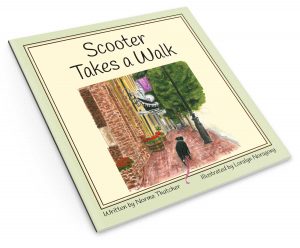
Photo courtesy of Samuel Zeller/Unsplash
The postlude at our Easter Vigil service was Toccata from Symphony No. 5 in F minor composed by Charles-Marie Jean Albert Widor (February 1844 – March 1937). This is a joyous piece of music that actually has been used at royal weddings. Prince William and Princess Kate used the piece during their 2011 wedding recessional.
Since I enjoyed the music so much, I searched on YouTube so I could hear it again.
Yes! There are numerous selections and I listened to half a dozen of them. I’ve included links to my favorites at the bottom of this post in case you are inclined to listen to one.
I try to discipline myself to NOT read online comments that people post, especially on YouTube. I have not conducted any scientific studies, but to me it feels as though there are four negative comments for each positive comment. And the negative comments can be crude and disgusting and appear to be written by people who consider themselves experts in the topic at hand, but clearly they are not!
Case in point: People complained about one audio of an organist playing the piece too slowly. They posted comments that came across as: It was boring. Didn’t the organist know this piece is to be played fast? This guy was too old to play the piece “correctly.”
Uh, that particular organist they were complaining about was the actual composer of the symphony! According to online sources and his biography, Mr. Widor never intended the toccata to be raced through in order to demonstrate the musician’s nimble fingers. When played too quickly, it sounds like a mishmash of sounds. (On a positive note, one commenter said she liked the slower version since faster versions sound as though the hounds of hell are chasing the organist.)
Of course, there is no video accompanying the music to Mr. Widor’s rendition since the recording dates back to 1932. But that’s OK with me as I prefer to put on my headphones and close my eyes to listen and concentrate on the music. You can hear much better if you just listen…sit quietly and listen.
So performing music to your own glory isn’t usually a good idea.
Chris Anderson, Curator of TED (TED.com), has a training video on Udemy (which is NOT free, as TED is). In it he gives instruction on how to turn an idea into a presentation.
Mr. Anderson cautions us to steer clear of this same type of self-glorification behavior when presenting because it usually backfires and causes audiences to either NOT like the speaker or decide NOT to listen to the speaker.
One way this happens is when a speaker uses the presentation time trying to sell his/her goods or services throughout the speech. I recall once looking forward to a conference where the speaker had a compelling message.
Yes, her message WAS compelling. But I tuned out halfway through because she kept referring to “my book….on sale at the back of the room.” Again and again, “my book…” “on page 67 of my book…” “as my book demonstrates…..” I did not buy her book.
Another way is when a speaker comes across as trying hard to be inspiring. Inspiration should happen naturally. If a speaker is seeking what I refer to as the three As (Admiration, Applause, Adulation), the audience will sense it quickly enough and again, either be turned off or tune out.
So whether playing a master symphony, giving a presentation, or performing an activity for the benefit of others, we need to be sure we’re working toward their needs and not our own.
Otherwise, someone will be sure to publicly comment on it.
Here are the links:
https://www.youtube.com/watch?v=DVYpNAA-EPc Daniel Flores, organist
https://www.youtube.com/watch?v=J8vz1D_L_OE Charles Widor himself in Paris
https://www.youtube.com/watch?v=pdrwazpZvAQ James Kennerly, organist
To my readers: What’s the silliest comment you’ve read online?



